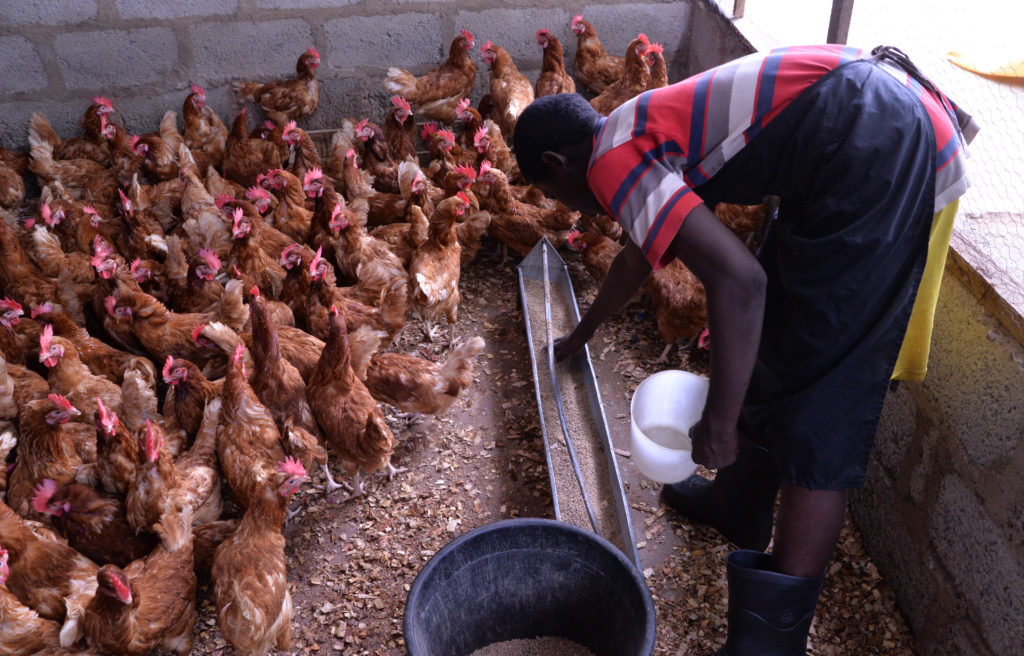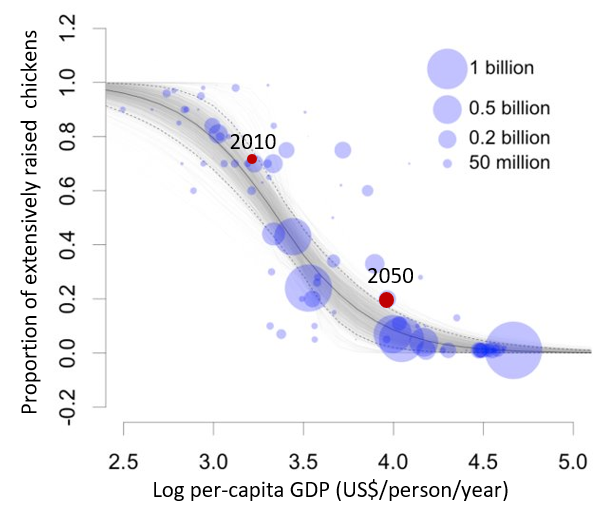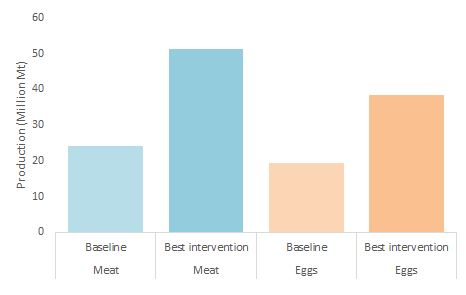Improving smallholder poultry productivity to 2050 in Nigeria
In 2050, smallholder poultry production could be doubled by using effective interventions. This could increase the share of total of total poultry production contributed by smallholders.
Photo credit: Shutterstock.
Current production systems
There are three main poultry production systems in Nigeria:
- Intensive commercial poultry – large flocks of modern hybrids
- Semi-intensive poultry – a blend of extensive and intensive systems
- Extensive poultry – smallholder households raising small flocks of indigenous birds
Indigenous poultry, raised by smallholder farmers, generally scavenge during the day and are housed at night to reduce losses from predation and theft. There is often very limited supplementary feeding. Egg production is generally low, resulting in lower egg and meat production.
Interventions can increase smallholder poultry productivity
Using a modelling approach, we simulated the effect of the below interventions on poultry productivity1:
- Vaccination
- Supplementary feeding
- Improved housing
- Control of broodiness (hen sitting on eggs)
- A combination of the interventions
While almost all modelled interventions increase smallholder poultry productivity, some are more effective than others.
The most effective interventions:
- Meat chicken – a combination of vaccination and housing
- Laying hens – a combination of vaccination and supplementary feeding
The relationship between log per-capita GDP and the proportion of extensively raised chickens for Nigeria (red dot) for 2010 and 2050. GDP and Population growth projections for SSP2 from IIASA.
GDP & poultry systems
As a country’s Gross Domestic Product (GDP) increases, poultry production systems become more intense and commercial.
The proportion of chickens raised by smallholder farmers in Nigeria is projected to reduce from 75% in 2010 to 20% by 2050.
Projecting increased smallholder productivity by 2050
We estimated potential yields of chicken meat and eggs in 2050 for smallholder production systems for the baseline and the most effective intervention scenarios. We used the relationship between GDP and poultry production systems and production projections for SSP2 from IIASA2.
In 2050, projected smallholder meat and egg production could be double the baseline production through adoption of the most effective interventions.
This approach assumes all smallholders adopt the most effective interventions.
Projected production of smallholder meat and egg production in 2050 for the baseline and most effective intervention scenarios. The most effective intervention for poultry meat is a combination of vaccination and housing, and for eggs is a combination of vaccination and supplementary feeding. Production projections for SSP2 from IIASA.
Key messages
The proportion of chickens raised by smallholder farmers is projected to decrease from 75% to 20% by 2050.
In 2050, projected smallholder meat and egg production could be double the 2050 baseline production through adoption of the most effective interventions.
This approach assumes all smallholders adopt the most effective interventions. However, barriers to adoption are significant and need careful consideration. Barriers to adoption may be greater in areas with low economic development.
Download the Improving smallholder poultry productivity to 2050 in Nigeria factsheet here.
References: 1For more information on the effect of modelled interventions on poultry productivity, see LiveGAPS factsheets: Improving poultry meat production in Nigeria; Improving poultry egg production in Nigeria; Improving poultry production in Nigeria – profitability of interventions IIASA’s SSP Database https://tntcat.iiasa.ac.at/SspDb/



